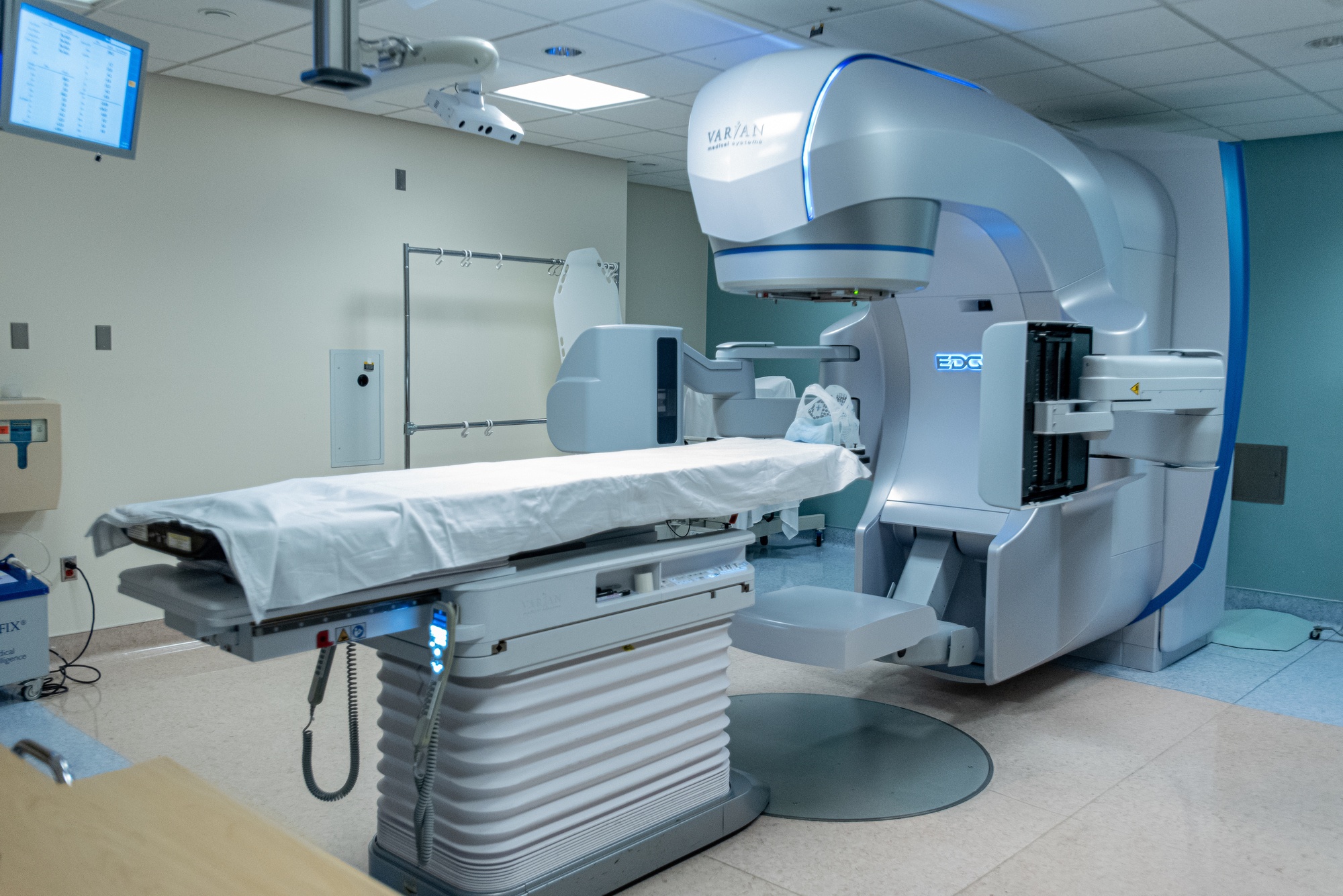
Radiosurgery & Radiation Oncology
What is Radiosurgery & Radiation Oncology?
Radiosurgery and radiation oncology are specialized fields within the field of oncology that utilize high-energy radiation to treat various types of cancer. These treatment modalities offer non-invasive or minimally invasive approaches to deliver precise radiation to cancerous cells while minimizing damage to surrounding healthy tissues.
Radiosurgery, also known as stereotactic radiosurgery (SRS), is a technique that uses focused radiation beams to deliver a high dose of radiation to a specific target within the body, typically a tumor or an abnormality in the brain or spine. Despite the name, it does not involve surgical incisions. Radiosurgery is often performed in a single session or a few sessions, using advanced imaging techniques to precisely locate the target and guide the radiation beams. The goal of radiosurgery is to deliver a concentrated dose of radiation that destroys cancer cells or reduces their ability to multiply, while sparing nearby healthy tissues.
Radiation oncology, on the other hand, encompasses a broader range of treatments that utilize radiation to target and destroy cancer cells. It includes techniques such as external beam radiation therapy (EBRT) and brachytherapy. External beam radiation therapy involves the use of a machine, such as a linear accelerator, to deliver radiation beams from outside the body to the tumor site. The treatment is carefully planned and delivered over a series of sessions, usually on a daily basis. Brachytherapy, on the other hand, involves the placement of a radiation source directly into or near the tumor, allowing for a higher dose of radiation to be delivered locally while minimizing exposure to surrounding healthy tissues.
Radiosurgery and radiation oncology are utilized for various purposes in cancer treatment. They may be used as primary treatment modalities to target localized tumors that are not amenable to surgical removal or as adjuvant treatments following surgery to target any remaining cancer cells. Radiation therapy may also be used palliatively to relieve symptoms or control tumor growth in advanced or metastatic cases.
Stereotactic radiosurgery & radiotherapy are essential treatments for some brain, skull base & pituitary tumors
Precision delivery of radiation is often used in treating unresectable, invasive or malignant tumors of the brain & skull base.
While many intracranial tumors can be completely removed with surgery, others require additional treatments including chemotherapy, immuno-therapy and/or radiotherapy. Precision delivery of radiation with either Stereotactic Radiosurgery (SRS) or Stereotactic Radiotherapy (SRT) is commonly used for many such tumors to halt tumor growth.
Determining whether SRS or SRT are appropriate and safe for a given patient depends on several factors, most importantly the tumor type, its precise location relative to key brain structures, its growth rate and what prior treatments have been given.
At Pacific Neuroscience Institute we have a large experience treating all types of brain, skull base and pituitary tumors with these techniques using our new Varian Edge linear accelerator.
Our comprehensive team approach which includes specialists in radiation oncology, neurosurgery, neuro-oncology and medical oncology allows for a personalized treatment for each patient.
Our Radiation Oncologists
April Vassantachart, MD and Robert Wollman, MD
Located at: Garden Level of the Howard Keck Center, Saint John’s Radiation Oncology Department
To schedule an appointment with our Radiation Oncologists, please call (310) 829-8913.
What is Radiosurgery?
Stereotactic Radiosurgery SRS is a single dose or up to 5 doses of highly focused radiation delivered to a tumor or vascular malformation. Radiosurgery is frequently used to treat brain, pituitary and skull base tumors that are not amenable to complete surgical removal or in patients with smaller metastatic brain tumors.
Key requirements for use of SRS is a tumor target that is at least 3 mm away from the optic nerves or chiasm or critical brainstem structures. For tumors less than 3 mm away from the optic nerves or chiasm, use of SRT (described below) is typically recommended. Radiosurgery can be delivered by a linear accelerator such as our Varian EDGE LINAC®, Cyberknife® or by Gamma Knife® technology; the effectiveness of these different forms of radiosurgery in terms of stopping tumor growth appears to be relatively equal.
Tumor types often treated with SRS:
Metastatic brain tumors, residual meningiomas, pituitary adenomas, chordomas, schwannomas. Other conditions include Trigeminal Neuralgia and Arteriovenous Malformations (AVMs).
What is Stereotactic Radiotherapy?
Stereotactic Radiotherapy (SRT) is delivery of multiple doses of focused radiation therapy (up to 30 daily doses typically given over a 6 week period) to treat a tumor or vascular malformation that is not amenable to a single high dose of radiation (radiosurgery).
SRT is used specifically for tumors that are less than 3 mm away from the optic nerves or optic chiasm or brainstem structures in order to avoid damage to these critical normal structures. This type of focused stereotactic radiation method allows delivery of a maximal tumor dose to the tumor while minimizing radiation to normal structures.
Tumor types often treated with SRT: residual meningiomas, pituitary adenomas, craniopharyngiomas, chordomas, schwannomas, sinonasal carcinomas.
What is Whole Brain Radiation (WBRT)?
Whole Brain Radiotherapy (WBRT) is delivery of multiple fractions of radiation to a large area of the brain given over several days or weeks. WBRT is used less frequently now that SRS and SRT are available.
However, there is still a role for WBRT in patients with multiple metastatic brain tumors (typically more than 10) and in patients with other extensive malignant brain tumors such as leptomeningeal carcinomatosis.
Tumor types that may require WBRT: leptomeningeal carcinomatosis, multiple brain metastases (over 10), metastatic small cell lung carcinoma.
